Lasting Effects in the Post-Colonial
Formal colonization ended at different times throughout Latin America. Spain’s political ties to the Americas ended in 1898 when the United States took control of its remaining colonies. However, the lasting cultural implications of colonialism directly influence the region. Political repression and economic exploitation over generations has led to poverty, resulting in the development of tourism. Tourism is an extremely important source of income and foreign investment in Latin America. This takes place in individual communities and at the national level. Countries create marketing campaigns to create a national identity and draw visitors from all over the world. However, this increase in tourism comes with the commodification of culturally significant arts, symbols, and practices.
While commodification typically has negative connotations, it doesn’t have to. Artists from Peru or Mexico can create a space of inclusivity and respect by selling artwork that imparts their perspective. A thriving art market can help preserve cultural knowledge and histories. Centering indigenous perspectives is part of post-colonial theory—a way of researching history that includes indigenous narratives that have often been excluded from public education and civic commemorations.
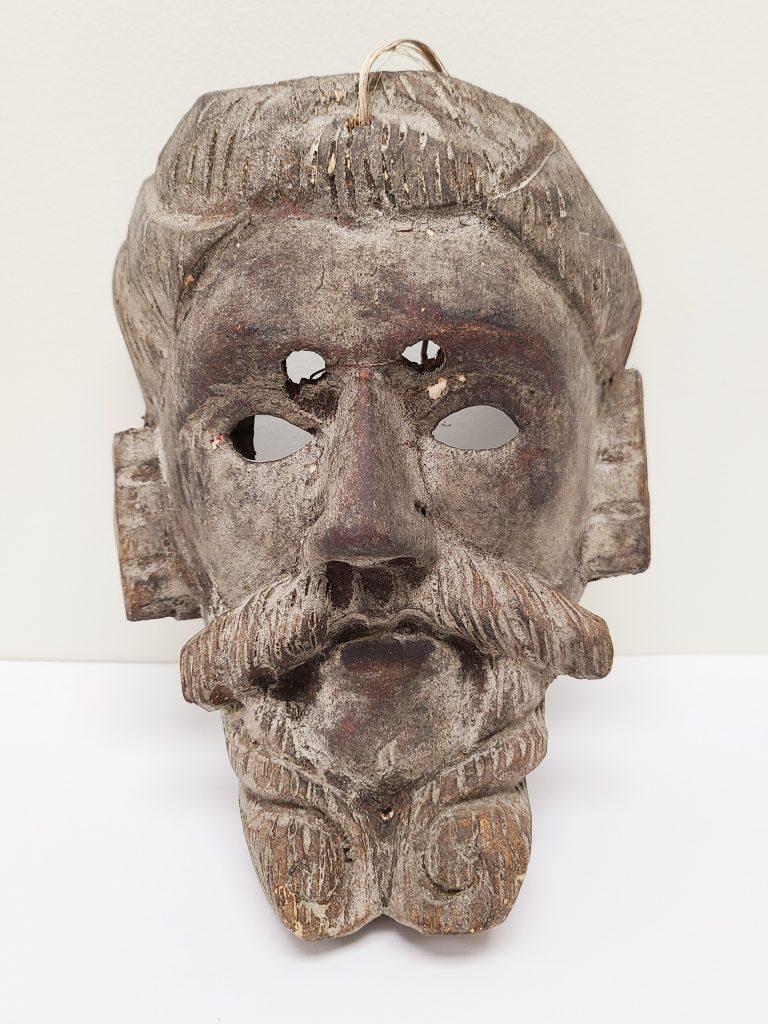
This wood mask resembles a Spanish Conquistador. It was crafted by an indigenous Maya artist and worn by festival performers in Guatemala. The performances reenact historical conflicts between the Spanish and the Maya during colonization. Historical reenactments and dances still happen annually and feature intricate costumes and performances representing dual Spanish and Maya heritage. These festivals preserve history and promote a sense of cultural pride. Costumes continue to change with the times by representing new historical themes.
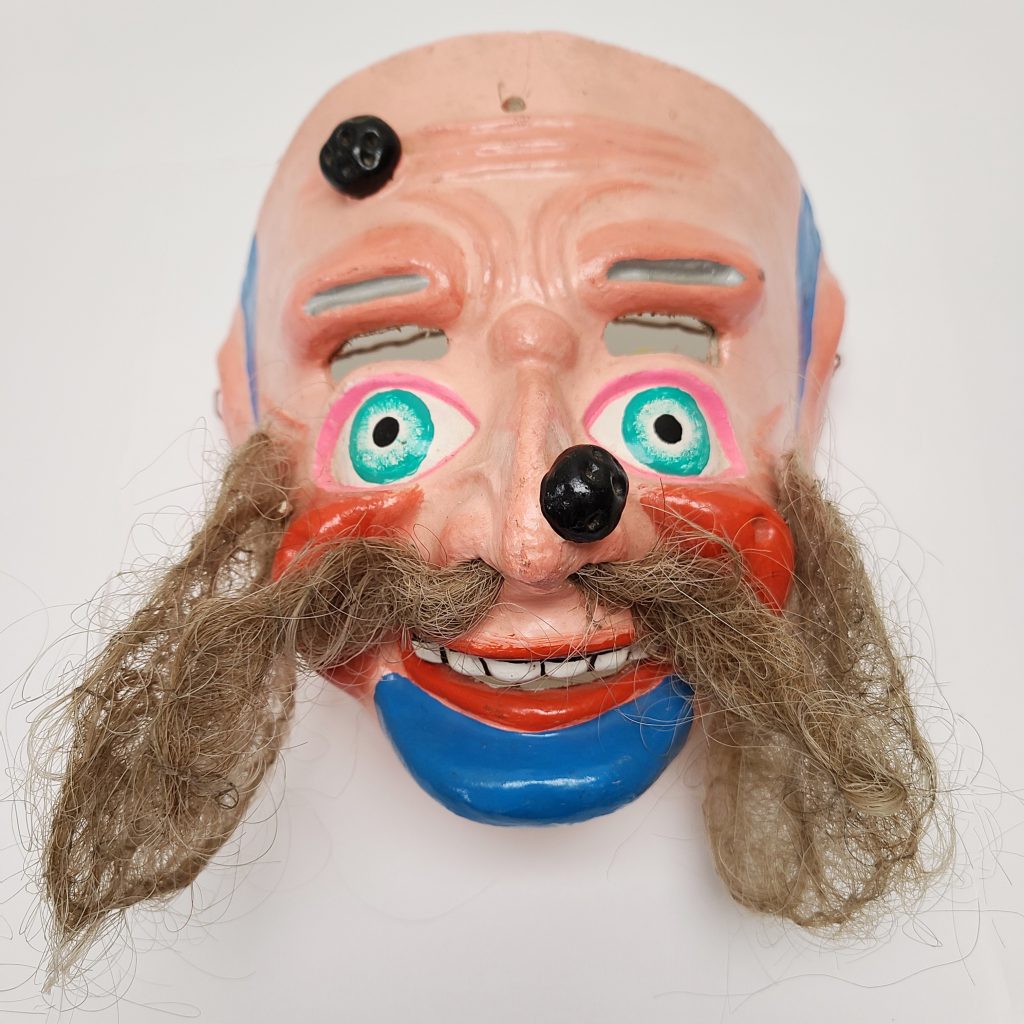
This mask from Oruro, Bolivia represents a character in masquerades that re-enact the Spanish conquest. The origins of this mask come from an indigenous perspective, but it does not represent a Native American. Called “the moor”, the character represents Muslim inhabitants of the Iberian Peninsula. The mask is used during Carnival along with many other kinds of masks. In this context, it acts as a symbol for the broader blend of indigenous and Catholic religious practices in Latin America.
Learn more about Carnival in Bolivia and make a mask with Cultures Up Close.
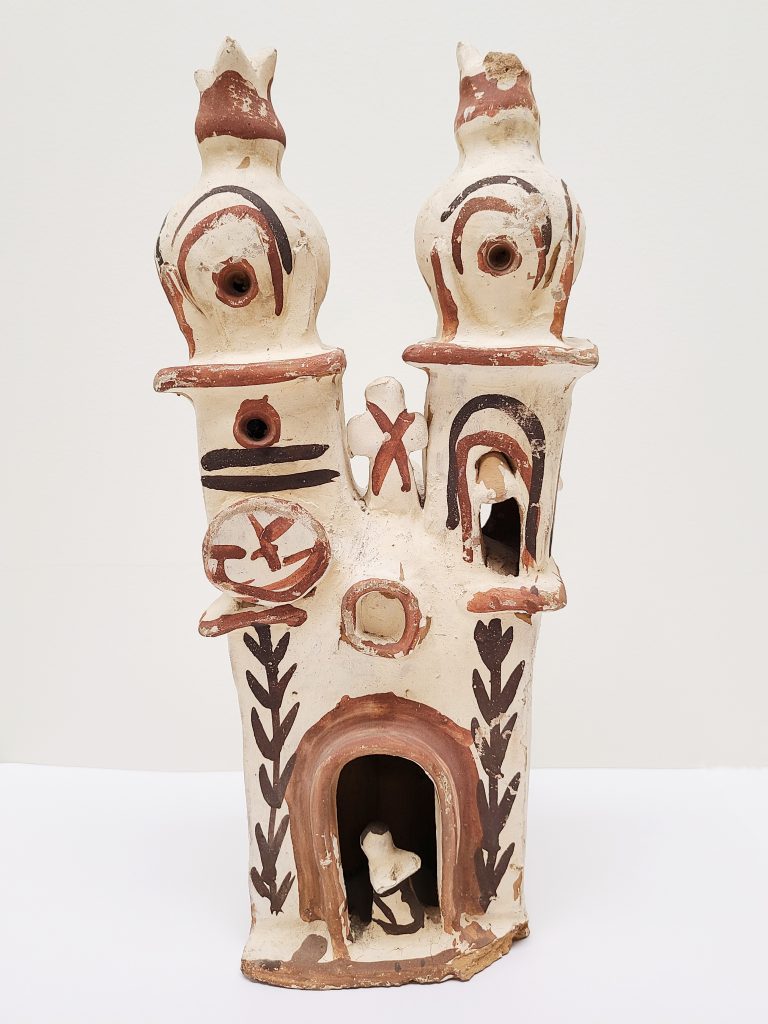
These ceramic art pieces were created by modern-day potters in Quinua, Peru. The less intricate of the pieces represents a circa-1960-80’s piece and the other, a more contemporary piece most likely aimed at tourists. This style of White-on-Red ceramic decoration has its roots in Wari culture, which dates from 500 CE -1000 CE, and has continued to hold an important ritual and symbolic meaning. Church models are placed upon house roofs as a symbol of protection against evil spirits and to help guide the family in growth and prosperity.
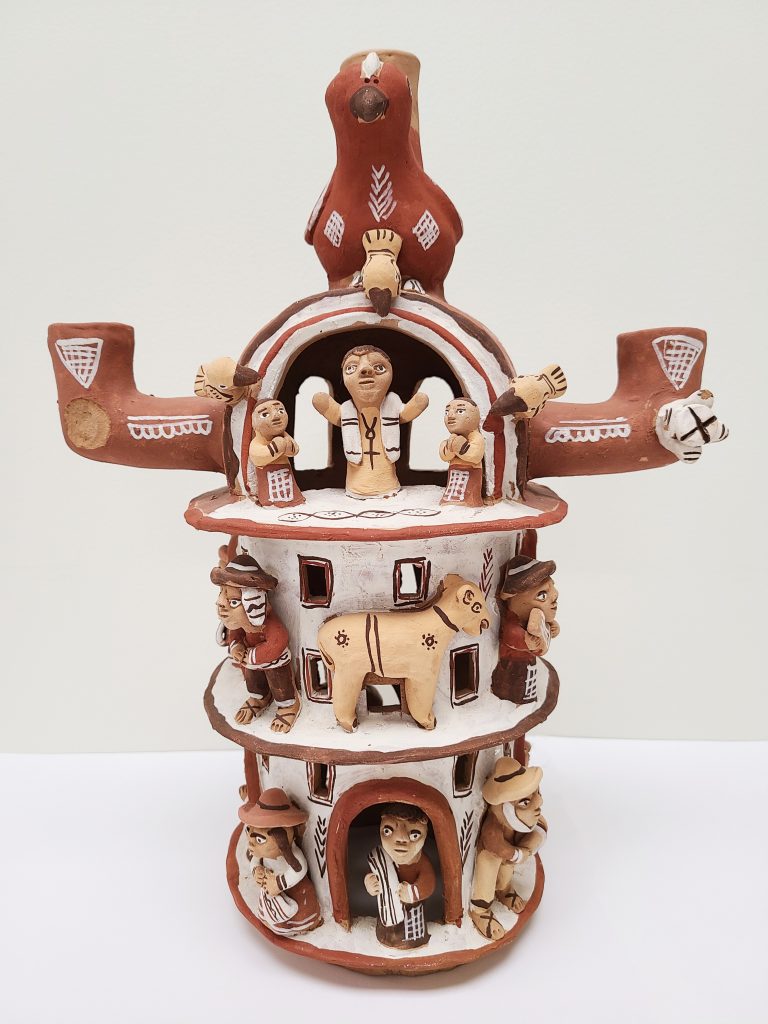

This mask depicting the devil was made in Guerrero, Mexico. It was worn during Carnival festivals by a dancer along with an elaborate costume. The dance depicts the devil as either the primary antagonist fighting against virtue, or as an intimidating figure riding a horse alongside another performer depicting death. The devil imagery, along with the Catholic holiday of Carnival itself, were introduced during colonialism, but public masquerades and dances stretch back to pre-colonial times.
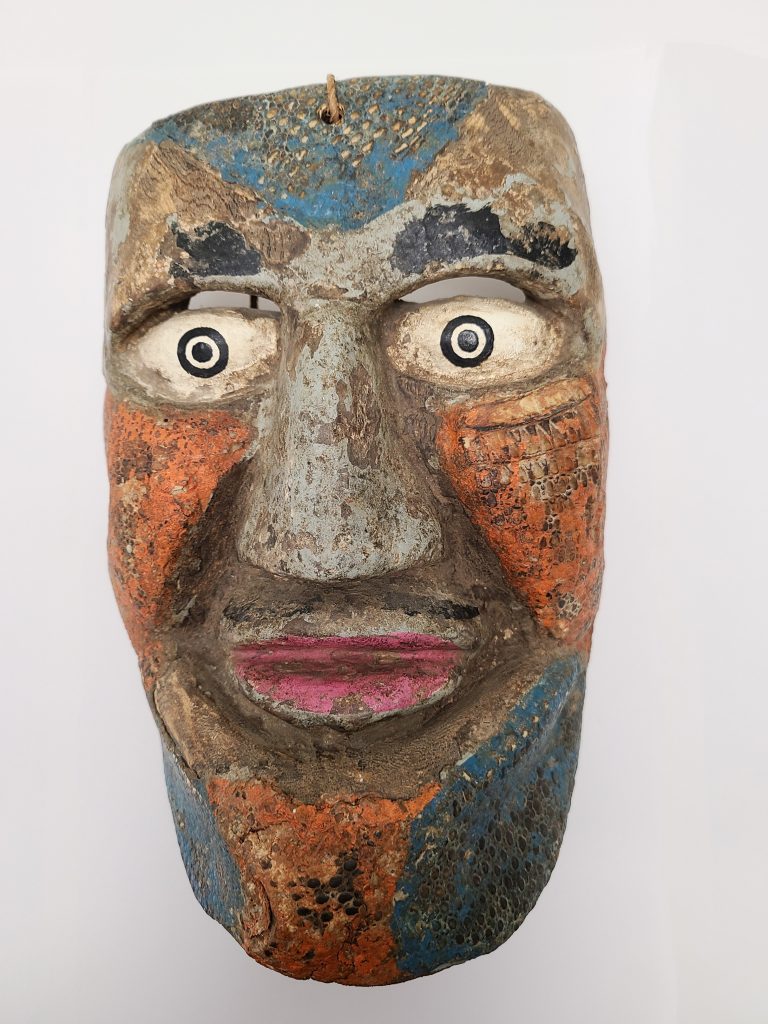
This mask is characteristic of artists from the southern Mexican states of Guerrero and Oaxaca. These states have large indigenous populations of Nahua, Mixtec, Zapotec, Amuzgo and Tlapanec peoples, among others. Masks like this one were used in festival dances and plays that tell local legends and myths involving human and animal characters. After colonization, they also told stories of Spanish conquest. This mask is made with painted armadillo hide. Though usable for a dance, it was likely made by indigenous artisans to be sold as tourist art.
